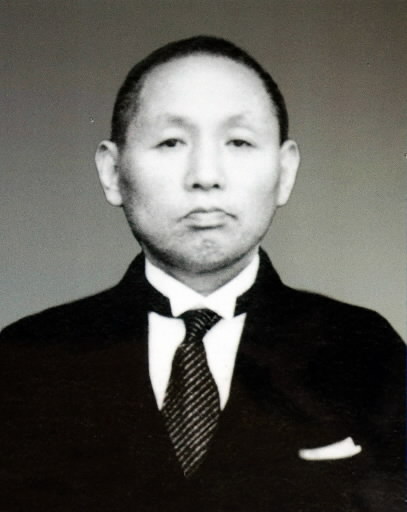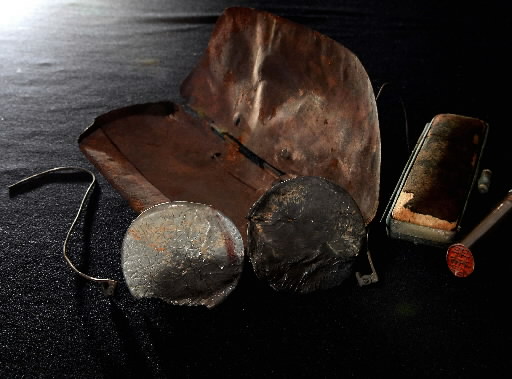Hiroshima: 70 Years After the A-bombing: Vanished neighborhoods 3
Jul. 9, 2014
Hirataya-cho (now Hondori, Naka Ward)
Business comes to an end after only one generation
A list of members put out by the Hiroshima Chamber of Commerce and Industry in 1933 includes the Hiragaki Bag Shop and describes it as “the originator of Hiroshima-made bedding covers.” Located in Hirataya-cho at the east end of Hondori, Hiroshima’s leading shopping area, the Hiragaki Bag Shop manufactured and sold futon covers and shoulder bags.
Higashi Hiroshima resident Keisaku Hiragaki, 71, said the business was built by his father, Tamotsu, who died in the atomic bombing at the age of 52. Until Keisaku was 3 years old, the family lived in a building that housed both their residence and the shop. On the day of the A-bombing, Keisaku was with his grandmother in Nishitakaya (now part of Higashi Hiroshima), where they had evacuated to. His mother Ayano had come to stay with them the day before to check on her son, thus escaping death.
On August 25, after walking the burned-out city, Ayano found her husband’s skeletal remains in the offices of a business organization he belonged to located near the Honkawa Bridge. Next to his remains were his glasses and his personal seal with his name inscribed on it. Keisaku’s brother, Daisaku, 27, who was to take over the business from his father, had been drafted and was at a barracks in Moto-machi (now part of Naka Ward) when the atomic bomb was dropped. He was taken to Mukaihara-cho (now part of the city of Akitakata) and died there on August 21.
“Our family lost its chief breadwinners, and my mother, who had to care for her small children and her elderly mother-in-law, had a very hard time,” Mr. Hiragaki said. Ayano supported the family by working on nearby farms in Nishitakaya. “She never complained,” Mr. Hiragaki said. “She was a strong mother.” After graduating from high school, Mr. Hiragaki got a job in Hiroshima and helped his mother.
He was unaware of the existence of his father’s belongings until his mother donated them to the Peace Memorial Museum in 1985. “Apparently she kept them hidden away,” he said. Ayano, who died in 1994 at the age of 94, repeatedly said she did not want the family grave to be moved, and her remains were interred with those of her husband and sons at Myorenji Temple in Fukuro-machi, near the Hondori shopping area.
Mr. Hiragaki understood his mother’s feelings. When in Hiroshima he finds himself walking to the Hondori shopping area. “If the A-bomb hadn’t been dropped, I probably would have gone into the family business too,” he said. When asked where he’s from, he replies, “Hondori.” He has put together records that include photographs showing the store with its “Hiragaki” sign on the shopping arcade, which was lined with decorative street lamps. He intends to give them to his children and grandchildren someday.
(Originally published on March 3, 2014)









